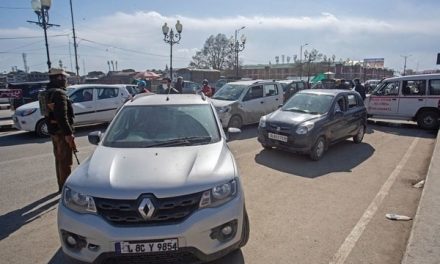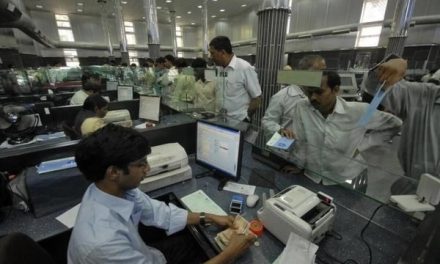As pollution levels in Delhi and NCR peaked to a three-year high, a thick blanket of smog engulfed several parts of the national capital on Monday. At several places, the Air Quality Index (AQI) even reached 999 mark, in the ‘hazardous’ category. On Monday morning, the overall AQI in Delhi was still in the ‘severe’ category.
Several flights were diverted and more delayed due to poor visibility at Delhi airport. Schools in the capital will remain closed till Tuesday, as a public health emergency was declared. The third edition of odd-even scheme road space rationing scheme kicked in from 8 am today, with only even-numbered non-transport vehicles allowed on Delhi roads on the first day. Meanwhile, the Arvind Kejriwal government continues to take measures to tackle the severe air pollution such as sprinkling water on roads to settle the dust.
The Centre also reviewed the situation with the governments of Delhi, Haryana and Punjab and announced that the cabinet secretary would monitor it on a daily basis. Stay tuned for the latest updates.
The air pollution in Delhi, the capital of India, according to a WHO survey of 1600 world cities, is the worst of any major city in the world. Air pollution in India is estimated to kill 1.5 million people every year; it is the fifth-largest killer in India. India has the world’s highest death rate from chronic respiratory diseases and asthma, according to the WHO. In Delhi, poor quality air irreversibly damages the lungs of 2.2 million or 50 per cent of all children.

Air quality index of Delhi is generally Moderate (101-200) level between January to September, and then it drastically deteriorates to Very Poor (301-400), Severe (401-500) or Hazardous (500+) levels in three months between October to December, due to various factors including stubble burning, road dust,vehicle pollution and cold weather. In November 2017, in an event known as the Great Smog of Delhi, the air pollution spiked far beyond acceptable levels. Levels of PM2.5 and PM 10 particulate matter hit 999 micrograms per cubic meter, while the safe limits for those pollutants are 60 and 100 respectively.
Causes Of Poor Air Quality:
- Fire in Bhalswa landfill is a major reason for airborne particles in Delhi.
- Agricultural stubble burning also affects Delhi’s air quality when crops are being harvested.
- Heavy metal-rich fire-crackers.
- Lack of active monitoring and reaction by authorities.
- Overpopulation.
- Lack of political priority.
- Motor vehicle emissions are one of the causes of poor air quality. Other causes include wood-burning fires, fires on agricultural land, exhaust from diesel generators, dust from construction sites, burning garbage and illegal industrial activities in Delhi.
- The drift/mist emissions from the wet cooling towers are also a source of particulate matter as they are widely used in industry and other sectors for dissipating heat in cooling systems.
- Although Delhi is kerosene free and 90% of the households use LPG for cooking, the remaining 10% uses wood, crop residue, cow dung, and coal for cooking.
Effects Of Poor Air Quality:
1- Effects on children
2.2 million children in Delhi have irreversible lung damage due to the poor quality of the air. In addition, research shows that pollution can lower children’s immune system and increase the risks of cancer, epilepsy, diabetes and even adult-onset diseases like multiple sclerosis.
2- Effects on adults
Poor air quality is a cause of reduced lung capacity, headaches, sore throats, coughs, fatigue, lung cancer, and early death.
To check the real-time air quality index of Delhi:
Delhi Air Pollution: Real-time Air Quality Index (AQI) https://aqicn.org/city/delhi/












